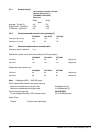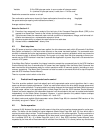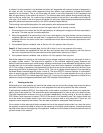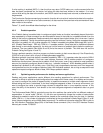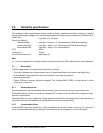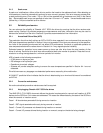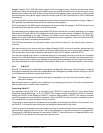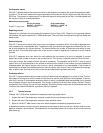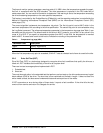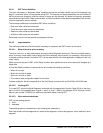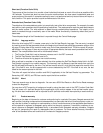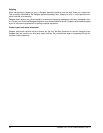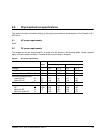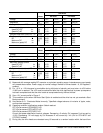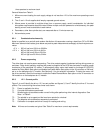
20 Cheetah 10K.7 SCSI Product Manual, Rev. D
Performance impact
S.M.A.R.T. attribute data will be saved to the disc for the purpose of recreating the events that caused a predic-
tive failure. The drive will measure and save parameters once every two hours subject to an idle period on the
SCSI bus. The process of measuring off-line attribute data and saving data to the disc is uninterruptable and
the maximum delay is summarized below:
Maximum processing delay
On-line only delay Fully enabled delay
DEXCPT = 0, PERF = 1 DEXCPT = 0, PERF = 0
S.M.A.R.T. delay times 60 milliseconds 370 milliseconds
Reporting control
Reporting is controlled in the Informational Exceptions Control Page (1Ch). Subject to the reporting method,
the firmware will report a predictive 01-5D00 sense code. The error code is preserved through bus resets and
power cycles.
Determining rate
S.M.A.R.T. monitors the rate at which errors occur and signals a predictive failure if the rate of degraded error
rate increases to an unacceptable level. To determine rate, error events are logged and compared to the num-
ber of total operations for a given attribute. The interval defines the number of operations over which to mea-
sure the rate. The counter that keeps track of the current number of operations is referred to as the Interval
Counter.
S.M.A.R.T. measures error rate, hence for each attribute the occurrence of an error is recorded. A counter
keeps track of the number of errors for the current interval. This counter is referred to as the Failure Counter.
Error rate is simply the number of errors per set of operations. The algorithm that S.M.A.R.T. uses to record
rates of error is to set thresholds for the number of errors and the interval. If the number of errors exceeds the
threshold before the interval expires, then the error rate is considered to be unacceptable. If the number of
errors does not exceed the threshold before the interval expires, then the error rate is considered to be accept-
able. In either case, the interval and failure counters are reset and the process starts over.
Predictive failures
S.M.A.R.T. signals predictive failures when the drive is performing unacceptably for a period of time. The firm-
ware keeps a running count of the number of times the error rate for each attribute is unacceptable. To accom-
plish this, a counter is incremented whenever the error rate is unacceptable and decremented (not to exceed
zero) whenever the error rate is acceptable. This counter is referred to as the Failure History Counter. There is
a separate Failure History Counter for each attribute. Should the counter continually be incremented such that
it reaches the predictive threshold, a predictive failure is signaled.
5.2.5 Thermal monitor
Cheetah 10K.7 SCSI drives implement a temperature warning system which:
1. Signals the host if the temperature exceeds a value which would threaten the drive.
2. Signals the host if the temperature exceeds a user-specified value.
3. Saves a S.M.A.R.T. data frame on the drive which exceed the threatening temperature value.
A temperature sensor monitors the drive temperature and issues a warning over the interface when the tem-
perature exceeds a set threshold. The temperature is measured at power-up and then at ten-minute intervals
after power-up.



